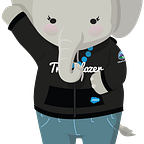Implementing Marketing Cloud with Multiple Salesforce Orgs (Part 3)
This is the final post in our three-part series about standing up Marketing Cloud in a Multi-Org environment. In our first post, we talked about how having the same contacts in more than one org can create duplicate records. In this post, we’ll do a deep dive into two more of the most common implementation scenarios to help avoid this.
Approach #3 ETL and MDM Tools
Instead of using Marketing Cloud Connect, you can purchase an ETL and Master Data Management tool to handle your integrations and data normalization.
Architecture Considerations
- Lead and Contact Data flows from your Salesforce Orgs through your middleware tool into your MDM system, where the records are merged, deduplicated and assigned a Unique ID. From there, the records flow through your middleware tool to your Enterprise Business Unit in Marketing Cloud and are then passed down to your individual business units as needed.
- Each contact’s Unique ID from your MDM system becomes its Subscriber Key in Marketing Cloud. This approach allows for a single instance of each contact with all of its history stored in a central location, which can also be used for reporting.
- You can also combine data stored in other systems with the records in your MDM system for use in your Marketing Cloud journeys.
- This approach requires ETL and MDM tools, which have to be purchased and implemented separately from your Salesforce orgs and Marketing Cloud Instance and will most likely require additional IT support staff.
- You can use your Middleware tool to enable email sends from your Salesforce reports and campaigns and to see tracking data in each contact’s original Salesforce Org, but you’ll have to make some customizations to make the data flow back and forth smoothly, such as creating an external ID field on all of your contact records in each Salesforce Org and populating it with the record IDs from your MDM system.
- You’ll also need to create a custom preference center and ensure that all subscription data replicates back to your MDM system.
Approach #4: Multiple Marketing Cloud Instances
Instead of trying to connect a single Marketing Cloud instance to multiple Salesforce Orgs, you can stand up multiple Marketing Cloud instances and connect each one to its own Salesforce org using single-org Marketing Cloud Connect. This approach will ensure simplicity with each connection and allow you to utilize the out of the box Marketing Cloud Connect functionality for each org without any additional customizations.
Architecture Considerations
- This approach can result in higher license costs if you have users who need to log into multiple Marketing Cloud instances.
- This approach works better with decentralized organizations where each Marketing Cloud instance is used by a different business unit that has its own branding and email templates.
- There isn’t a good way to identify duplicate contacts across multiple Marketing Cloud instances, which can make it difficult to implement any type of global opt-out functionality, potentially creating compliance issues unless your business units are truly seen as being independent from one another.
Choosing an Architecture
Which approach is the best fit for your organization? Unfortunately, the answer is: it depends and there are tradeoffs to each approach. In some cases, you may have to purchase additional tools or hire new resources. In other cases, you may need to add customizations or use manual workarounds for certain tasks that your employees may not have capacity for. So as you’re deciding which approach to take, make sure to weigh the pros and cons of each one to determine the best fit for your organization based on your current landscape, available resources, processes and your vision for the future.
Additional References
- Marketing Cloud and Salesforce-Implementation Strategies from Salesforce Architects
- Effective Use of Your CRM and Marketing Solutions
- Incorporating Marketing Cloud into your Salesforce Platform
Author Bios
Tiago Ruivo is a Senior Principal Customer Success Architect at Salesforce.org based in Chicago. With a deep technical architectural background and implementation experience, he helps organizations in the nonprofit and education industries succeed in their IT transformation using Salesforce and integrating it in its larger Enterprise Architecture.
Tom Leddy is a Director of Advisory Services at Salesforce.org Tom is based in the Chicago area and helps organizations in the nonprofit and education industries integrate Salesforce into their IT landscapes so they can serve their communities more effectively. He is also an author, public speaker, marathon runner and the president of Pawsitively Famous, Inc. You can connect with Tom on LinkedIn or Twitter.
Gokul Seshadri is a Senior Principal Customer Success Architect at Salesforce.org based in the U.S. He helps higher ed and nonprofit customers to succeed in their multi-channel marketing, digital transformation, and customer 360 initiatives using Salesforce.org Nonprofit Cloud, Education Cloud, and other related technologies.
Brad Shapiro (Principal Marketing Cloud Advisor) is a trusted digital marketing and communications advisor to the world’s leading Salesforce.org nonprofit and higher education organizations. With an extensive background in business strategy, digital transformation, and deep technical expertise, Brad can quickly enable organizations with the tools and strategies needed to engage audiences in an increasingly competitive marketplace.
Tony Angle is a Principal Customer Success Architect and works in the Marketing Cloud Advisory area and is based in Virginia, US. He has worked with various educational and nonprofit organizations to help bring visibility to issues around data management as well as platform governance.
